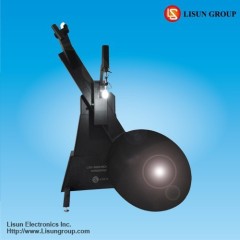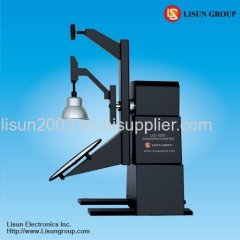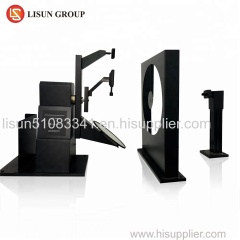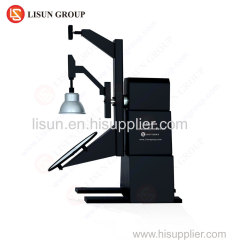Measurement:
Luminous Intensity Data, Luminous Intensity Distribution, Zonal Luminous Flux, Luminaries Efficiency, Luminance Distribution, Coefficient Of Utilization, Luminance Limitation Curves Glare, Maximum Ratio of Distance to Height, Equal Illuminance Diagrams, Curves of Luminaries VS Lighting Area, Lsocandela Diagrams, Efficient Luminescence Angle, etc.
Features:
• Many national patents pending on hardware and software.
• The near field detector moved together with the big mirror in a line, the big mirror and far field detector move synchronously.
• The luminaries will be keep the burning position without moving at all, and the detector will always sense the light directly from the luminaries.
• CIE Class A & Constant temperature photo detector (Class L detector can be optional).
• High degree of intelligent and test function is complete.
• The rotation motor is from Japan MITSUBISHI MOTORS and it uses Germanic angle decode system, it will help smoothly and high accuracy rotation. It is very stable when start and stop.
• The working principles are according to IESNA and CIE. This instrument is specially recommended by LM-75, LM-79 and CIE121-1996.
• With some optional instruments, it has good expanding functions
• The position and working state remain the same as it is under working.
• Special collimation device with laser cross line, conveniently and accurately fix the position of the tested luminaries.
Specifications:
• The tested luminary rotates around the mirror with an angle of (γ)±180°(or 0-360°) and the tested luminary rotates around itself with an angle of (C)±180°(or 0-360°).
• The accuracy of angle: 0.1° Resolution of angle: 0.01°
• Accuracy of photometry: CIE class A (Standard Class) or Class L.
• The test result can be exported as CIE, IES, LDT and other format files. This kind of format files can be transferred by other illumination and luminary design software such as DiaLux.
• RS-232C standard interface can be connected to PC, English version software can run in WinXP or Win7
LSG-3000 can be used with a USB CCD Spectrometer to test spatial CCT Distribution and other Spectral color parameters. We call this system "Goniospectroradiometer (LSG-3000CCD)".








